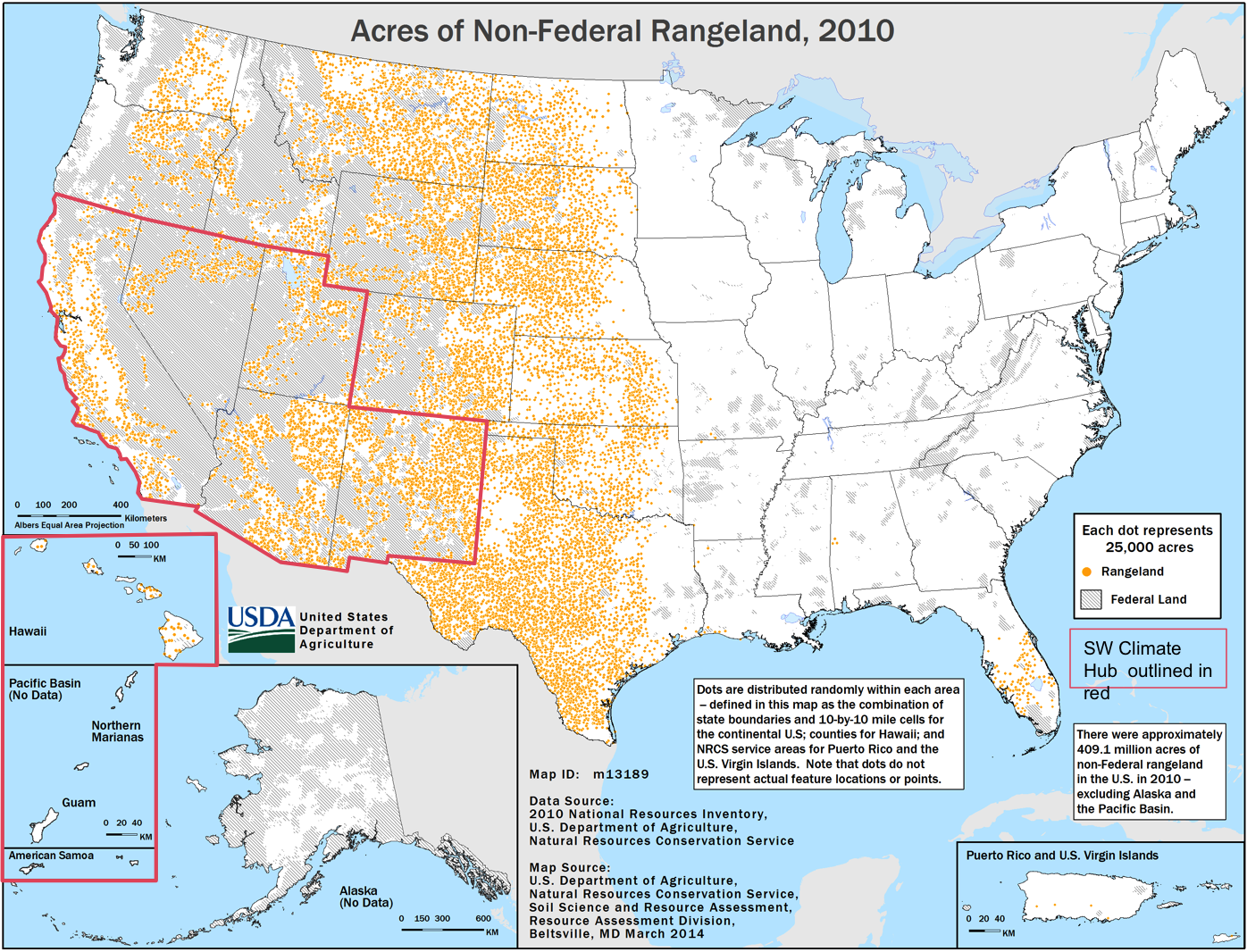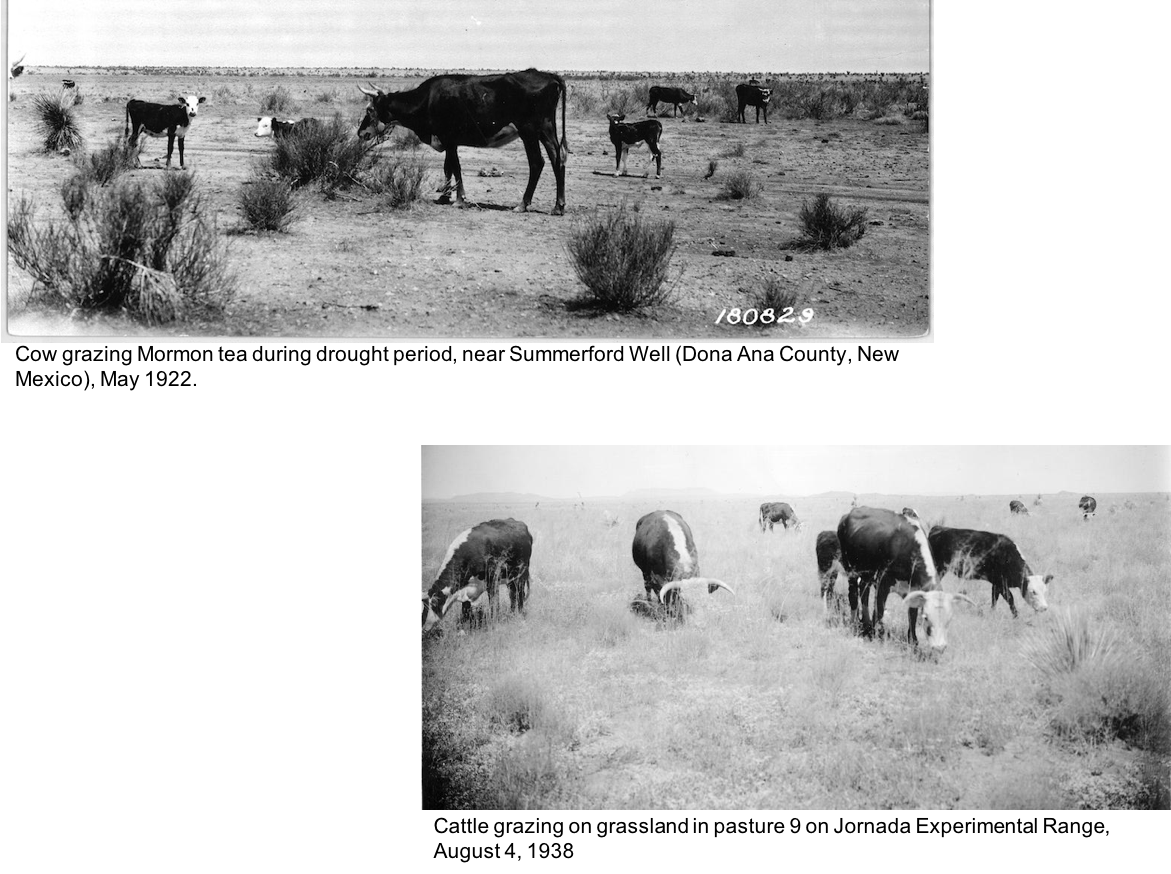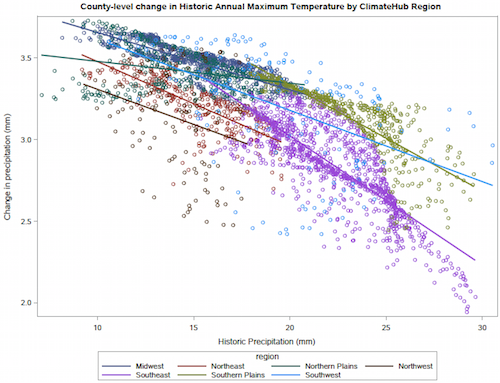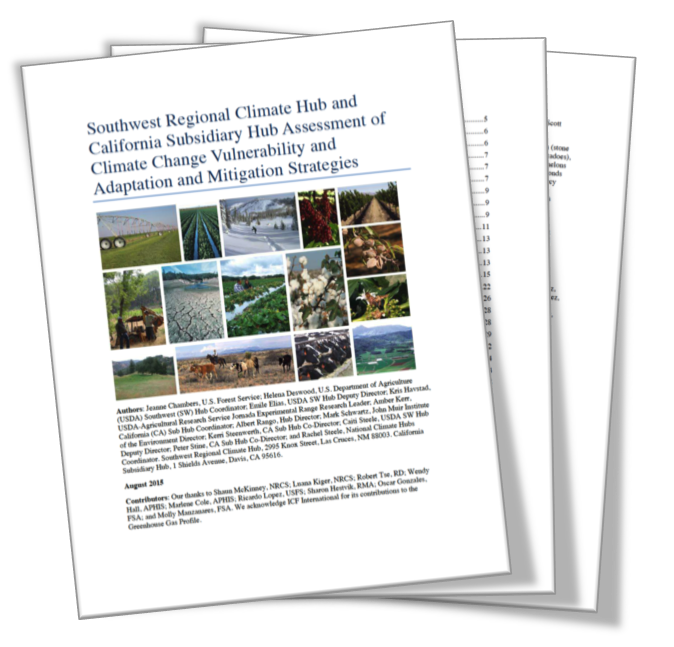- Data
- Videos
-
Publications & Research
-
Education
- Water Conservation Data Jam - Curriculum for 6th-12th Grade Students
- Climate Change and Wildfire – Curriculum Unit for 9-12 Grade Students
- Climate Change and the Carbon Cycle – Curriculum Unit for 9-12 Grade Students
- Where's Our Water? Water Conservation in the Southwest - Lesson for 6-8 Grade Students
- Climate Change and the Water Cycle - 10-Hour Curriculum Unit for 6-12 Grade Students
- The Effects of Climate Change on Agricultural Systems - 5-Hour Curriculum Unit for 6-12 Grade Students
- Cambio climatico y el ciclo del agua
- Webinars and Online Courses
- Websites
- News & Events
- About Us
- RMA
Focus on Rangeland
Overview of climate change impacts on rangelands in the Southwestern United States
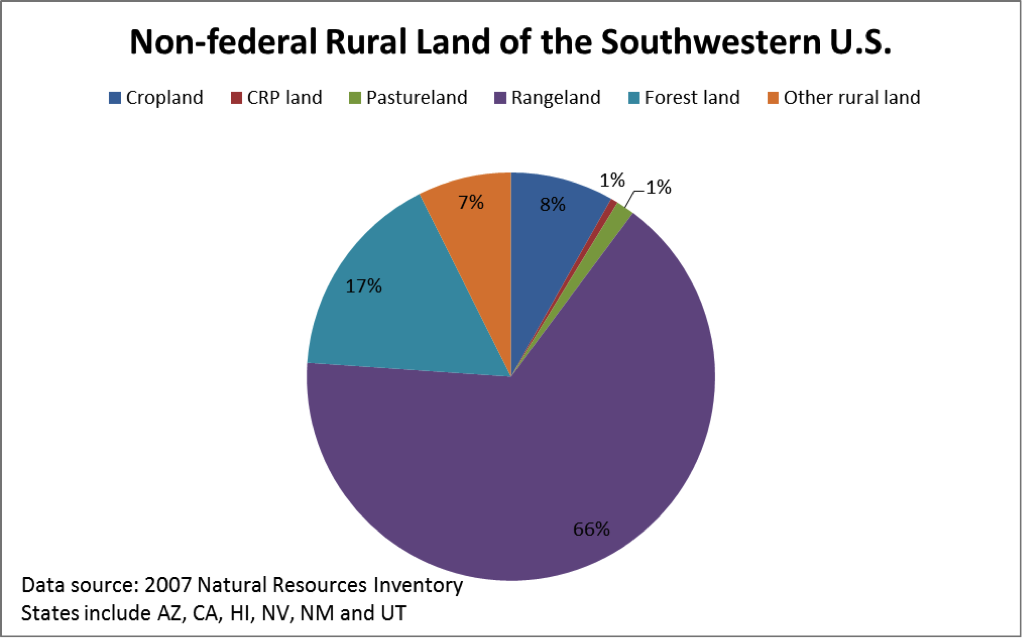 Rangelands compose the largest non-federal rural land area of the Southwestern United States. Approximately 52% of the land area in the six Southwestern Hub states is classified as federal land
Rangelands compose the largest non-federal rural land area of the Southwestern United States. Approximately 52% of the land area in the six Southwestern Hub states is classified as federal land 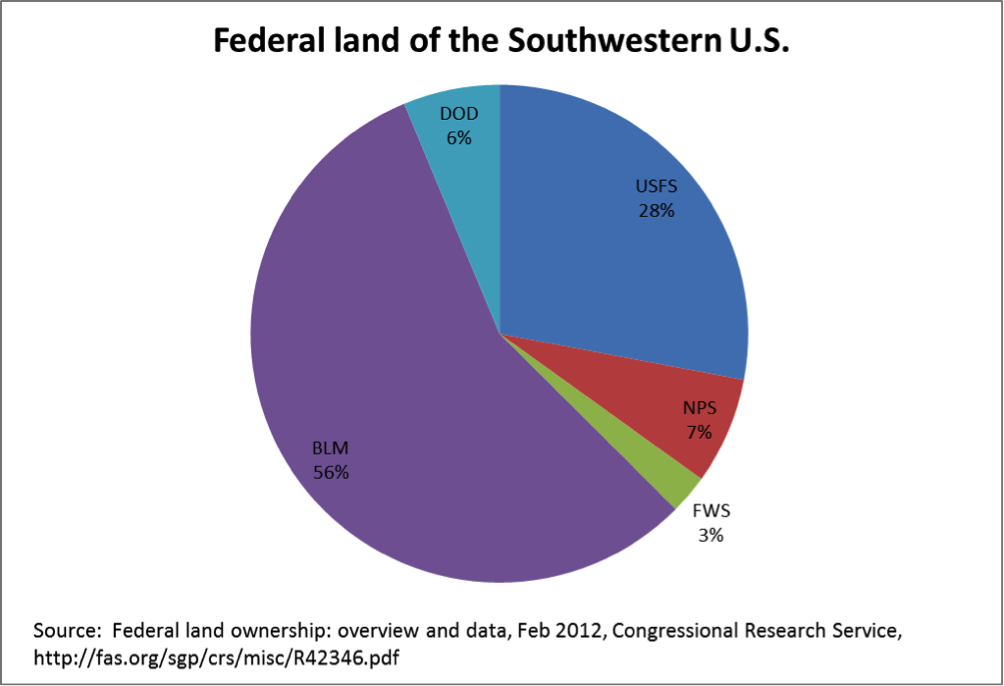 and managed largely by four agencies and the Department of Defense. Approximately 66% of the collective rural land area
and managed largely by four agencies and the Department of Defense. Approximately 66% of the collective rural land area 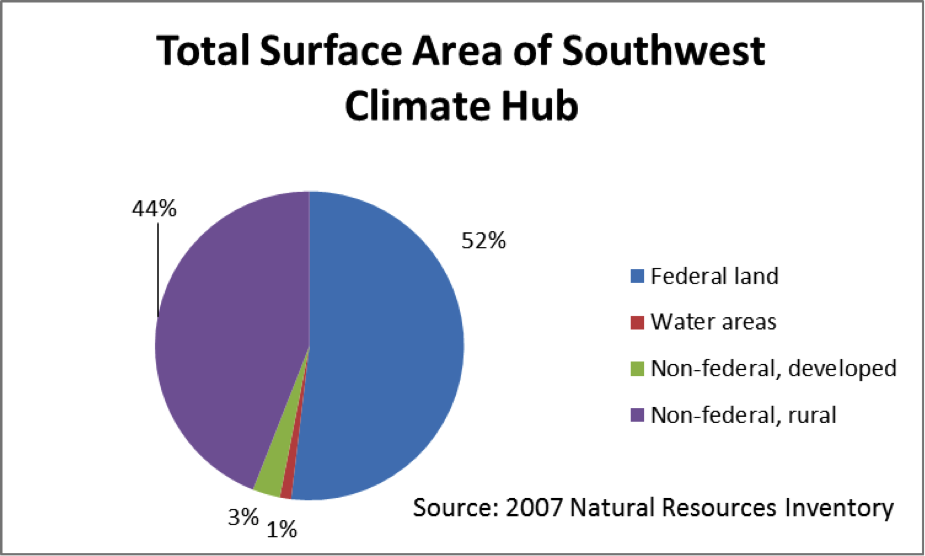 in Arizona, California, New Mexico, Nevada, Utah, and Hawaii is classified as rangeland (USDA 2009). More than 80% of the total non-federal rural land is classified as rangeland in Arizona (81%), Nevada (85%), and New Mexico (81%) (see map http://www.nrcs.usda.gov/Internet/FSE_MEDIA/stelprdb1041623.png).
in Arizona, California, New Mexico, Nevada, Utah, and Hawaii is classified as rangeland (USDA 2009). More than 80% of the total non-federal rural land is classified as rangeland in Arizona (81%), Nevada (85%), and New Mexico (81%) (see map http://www.nrcs.usda.gov/Internet/FSE_MEDIA/stelprdb1041623.png).
The projected warming and reduced precipitation of a changed climate will combine to decrease soil water availability and reduce both the amount and nutrient content of plant production and alter plant community composition on rangelands in the Southwestern US (Polley et al. 2013). This reduced water availability can be expected to reduce plant growth, shorten the growing season and decrease the amount of forage that serves as a basis for the livestock industry. Similarly, changes in the amount and distribution of precipitation, coupled with higher temperature regimes can be expected to alter plant phenology and reduce the reliability of the production of high quality forage. In addition, the digestibility and nutritive value of plant tissues are both diminished by an increase in the carbon:nitrogen ratio that accompanies plant growth in elevated atmospheric CO2 and by an acceleration leaf senescence induced by water stress (Morgan et al. 2004). Lower quality forage and the ensuing reduced nutrient intake coupled with higher summer temperatures and more frequent heat stress are likely to further reduce livestock production (CCSP 2008). Heat stress can also reduce forage intake and lower the reproductive efficiency of livestock, affecting herd management decisions (Polley et al. 2013).
Increasing frequency and severity of droughts will likely change plant species composition and reduce plant cover through a combination of increased wildfire impacts and episodic plant death. The reduced availability of both soil moisture and water flowing in perennial and ephemeral streams will likely have negative impacts on the vegetation associated with riparian areas such as willows and cottonwoods, but increasingly variable flows could favor invasive species such as salt cedar. As these changes in riparian vegetation become more widespread, the impacts on animal species reliant upon both the vegetation structure and water quality and quantity are likely to be cumulative, resulting in more severe detrimental impacts. Since ranchers manage livestock herds based upon water and vegetation availability, these changes will likely decrease livestock numbers rangelands can support while increasing forage cost.
- [CCSP] U.S. Climate Change Science Program. 2008. Synthesis and Assessment Product 4.3 (SAP 4.3): The effects of climate change on agriculture, land resources, water resources, and biodiversity in the United States. U.S. Climate Change Program, Washington, D.C.
- Joyce, L.A., D.D. Briske, J.R. Brown, H.W. Polley, B.A. McCarl, and D.W. Bailey. 2013. Climate change and North American rangelands: assessment of mitigation and adaptation strategies. Rangeland Ecology & Management 66:512-528.
- Morgan, J.A., A.R. Moiser, D.G. Milchunas, D.R. Lecain, J.A. Nelson, and W.J. Parton. 2004. CO2 Enhances productivity, alters species composition, and reduces digestibility of shortgrass steppe vegetation. Ecological Applications 14:208–219.
- U.S. Department of Agriculture. 2009. Summary Report: 2007 National Resources Inventory, Natural Resources Conservation Service, Washington, DC, and Center for Survey Statistics and Methodology, Iowa State University, Ames, Iowa. 123 pages. http://www.nrcs.usda.gov/technical/NRI/2007/2007_NRI_Summary.pdf
